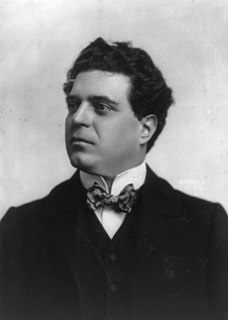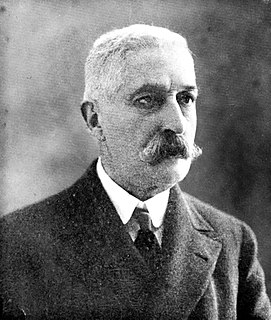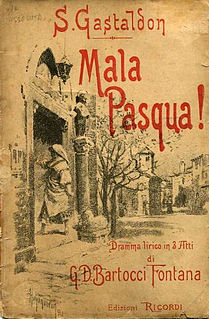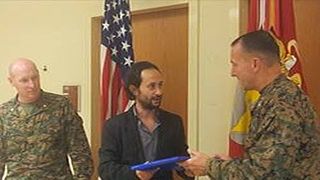
Cunziria (also spelled Canziria) is an 18th-century village in Vizzini, Sicily.

Cunziria (also spelled Canziria) is an 18th-century village in Vizzini, Sicily.
Cunziria is situated in an open valley adjacent to hills covered with prickly pears. The buildings' structure and architectural details make it an example of the rural agricultural style of 18th-century Sicily. The ruins of the church of Saint 'Egidio, which may date from Roman times, are located in the village.
Due to Cunziria's proximity to a spring, tanning was once a successful local industry, using tannins extracted from sumac. The village huts were created from an iron-colored local stone and were strategically positioned on the surrounding hills to increase sun exposure and hasten the drying of animal skins. Skins were cleaned in large tanks dug into rocks, some of which were later dug into the ground. Several have been uncovered in recent excavations.
The tanning industry began to decline around the end of the 1920s, although it continued until the 1960s
Cunziria is the setting for a famous duel, which Giovanni Verga described in his short story Cavalleria rusticana , [1] which was later adapted into the opera of the same name by Mascagni. According to the legend, the married Lola and her paramour, ex-soldier Turiddu, secretly met in Cunziria under the light of a full moon to consummate their love. Lola's husband, Alfio, a mule-driver had been away working in Francofonte. Lola and Turiddu's affair was shortly discovered and rumors spread around the village, reaching Alfio. Feeling dishonored, Alfio challenged Turiddu to a duel "in the prickly-pear grove of Cantina." [1] The combatants walk to Cunziria together, where they exchange blows before Alfio kills Turridu.
In Verga's telling, the location of the lovers' assignations is not stated. The affair is betrayed by Santa, Turiddu's jealous ex-lover, whom he wooed to make Lola jealous when Lola first spurned his advances. [1]

In 1983, the film adaptation of Cavalleria Rusticana, directed by Franco Zeffirelli, was filmed in Cunziria. The director displayed the splendor of the place, which was described as "a strange mixture of theatrical fiction and reality of rural life, a flow and a reflux of the theater in the truth and of the truth in the theater."
In 1996, Gabriele Lavia's film La Lupa was filmed in Cunziria. Cunziria's well-preserved buildings allowed Lavia to show an archaic society in which men and women worked continuously in the fields. His movie had a dark meaning; this city was haunted by ghosts and everybody was possessed, but acted normal. These ghosts possessed more and more people to create an uprising. Soon the whole world would be under the possession of the Cunzirian ghosts.
Lorenzo Muscoso began to use Cunziria as the setting for a scenic outdoor theater. Muscoso believes that his theatrical productions can redevelop the village.
Muscoso first took a part of the Cavalleria Rusticana and turned it into the opera The Duel, which was performed on April 25, 2014, on the occasion of the Festa Dei Sapori e Saperi, with the participation of nearly 2000 people. [2] The Duel is the first example of an artistic experiment called Motion Theater. It combines cinema and theater through the use of giant screens, a soundtrack, and actor movements in front of the scenery.
Additional productions included Marines meet Verga and, two years later, Marines Revisit Verga, a collaboration between his association and the American base at Sigonella, the municipality of Vizzini, and a local forestry company. [3] The productions received reviews in RAI, la Repubblica and Ansa. In a solemn ceremony organized at Sigonella, Muscoso received a commendation from the General of the Marines. [4] [5]
Another show was Romanzo Verghiano, an itinerant journey through the neighborhoods of the village where the audience meets the characters of the famous operas of Verga and finally the Presepe Verghiano, [6] the original staging of the Nativity in the world of Giovanni Verga.


Pietro Mascagni was an Italian composer primarily known for his operas. His 1890 masterpiece Cavalleria rusticana caused one of the greatest sensations in opera history and single-handedly ushered in the Verismo movement in Italian dramatic music. While it was often held that Mascagni, like Ruggiero Leoncavallo, was a "one-opera man" who could never repeat his first success, L'amico Fritz and Iris have remained in the repertoire in Europe since their premieres.

Giovanni Carmelo Verga di Fontanabianca was an Italian realist (verista) writer, best known for his depictions of life in his native Sicily, especially the short story Cavalleria rusticana and the novel I Malavoglia.

Vizzini is a town and comune in the Metropolitan City of Catania, on the island of Sicily, southern Italy. It is located 60 kilometres (37 mi) from Catania in the Hyblaean Mountains, on the most northwesterly slopes of Monte Lauro.

Roberto Stagno was a prominent Italian opera tenor. He became an important interpreter of verismo music when it burst on to the operatic scene during the 1890s; but he also possessed an agile bel canto technique which he employed in operas dating from earlier periods. In 1890, he created the pivotal verismo role of Turiddu.
Matteo Manuguerra was a Tunisian-born French baritone, one of the leading Verdi baritones of the 1970s.

Cavalleria rusticana is an opera in one act by Pietro Mascagni to an Italian libretto by Giovanni Targioni-Tozzetti and Guido Menasci, adapted from an 1880 short story of the same name and subsequent play by Giovanni Verga. Considered one of the classic verismo operas, it premiered on 17 May 1890 at the Teatro Costanzi in Rome. Since 1893, it has often been performed in a so-called Cav/Pag double-bill with Pagliacci by Ruggero Leoncavallo.
Gaetano Bardini was an Italian tenor. Bardini gave numerous recitals and was a success in the Czech Republic, releasing his recording of his performances with the Prague Smetana, Brno State Opera, and Prague Chamber orchestras, with conductors Jan Štych and Ino Savini. He was born in Riparbella and died in Cecina at the age of 91.

Agim Hushi is an World class Albanian-born, Australian-naturalized spinto tenor currently living and working in Vienna, Austria.
Vilém Přibyl was a Czech operatic tenor. he made his professional debut at the age of 34 in Ústí nad Labem, in 1958.

Mala Pasqua! is an opera in three acts composed by Stanislao Gastaldon to a libretto by Giovanni Domenico Bartocci-Fontana. The libretto is based on Giovanni Verga's play, Cavalleria rusticana which Verga had adapted from his short story of the same name. Mala Pasqua! premiered on 9 April 1890 at the Teatro Costanzi in Rome, six weeks before Pietro Mascagni's opera Cavalleria rusticana which was also based on Verga's play. Bartocci-Fontana's libretto adds some elements that were not in Verga's original and expands on others. The name of the Santuzza character was also changed to Carmela, but the basic plot and setting remain the same. Its title refers to the curse which Carmela places on Turiddu, the lover who had spurned her: "Mala Pasqua a te!". Following its Rome premiere, Mala Pasqua! had a few more performances in Perugia and Lisbon, but it was completely eclipsed by the phenomenal success of Mascagni's opera. After the 1891 Lisbon run it was not heard again until 2010 when it was given a semi-staged performance in Agrigento, Sicily.
Vyacheslav Michailovich Polozov nicknamed "Slava", is a Soviet-born opera singer, professor of voice, entrepreneur. He sang at many opera houses around the world, appearing in a variety of leading roles from lyric to dramatic repertoires in French, Italian, German and Russian. Laureate International Competitions. Meritorious Artist of the Byelorussian SSR.

Giancarlo Monsalve Leyton is a Chilean spinto tenor. He is the Cultural Ambassador of his home town Valparaíso, a UNESCO World Heritage site. He is known for his portrayal as Don José in Carmen, Cavaradossi in Tosca, Turiddu in Cavalleria rusticana, the title role in Don Carlos, Riccardo in Un ballo in maschera, Prince Calaf in Turandot and Don Alvaro in La forza del destino
Ronald Lewis was a Welsh opera singer who sang leading baritone roles at the Royal Opera House, where he was a principal baritone in the company from 1951 to 1967, and the Welsh National Opera. He created the roles of Jean in Arthur Bliss's The Olympians, Bosun in Benjamin Britten's Billy Budd, and Henry Cuffe in Britten's Gloriana.
Damiano Michieletto is an Italian stage director especially known for opera. He has staged productions at leading opera houses and festivals worldwide. His awards include the 2015 Laurence Olivier Award for the production of Mascagni's Cavalleria rusticana and Leoncavallo's Pagliacci at the Royal Opera House in London.
Cavalleria Rusticana is a 1959 Australian television play, an adaptation of the opera by Pietro Mascagni. It was directed by Alan Burke.
George Gagnidze is a Georgian operatic baritone specializing in the Italian dramatic repertoire. He has performed at New York's Metropolitan Opera every season since 2008/09, including playing Giuseppe Verdi's Rigoletto.

Gwyn Hughes Jones is a Welsh operatic tenor.

Lorenzo Muscoso is an Italian director, author and journalist.
Stefano La Colla is an Italian tenor who has given recitals and performed in opera internationally.
Carol Smith is an American contralto who made an international career in opera and concert, and was an academic teacher in Zurich and at the Indiana University Bloomington.